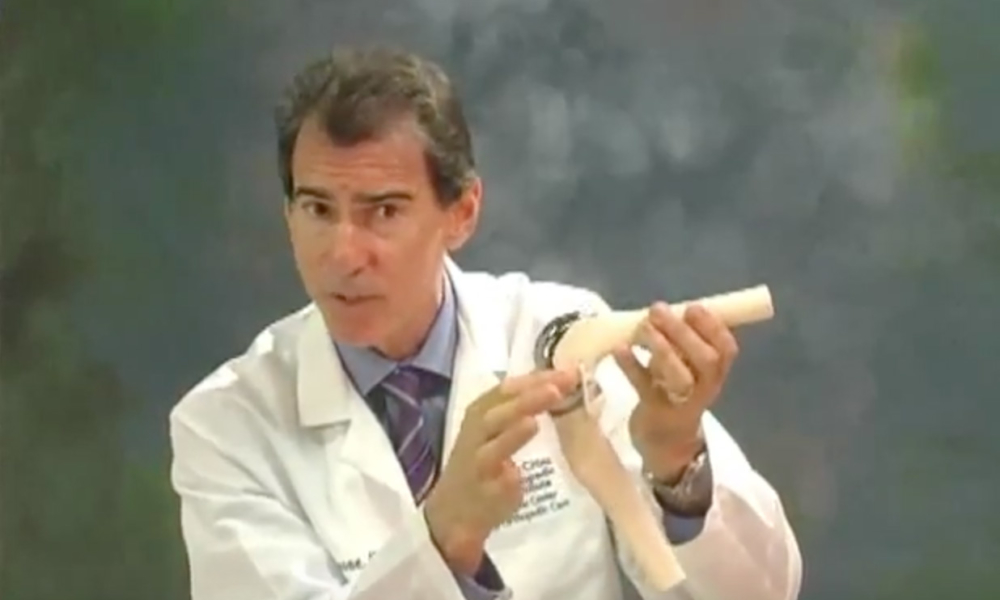
A Bad Total Knee Is Restored with the Use of an OrthoSensor Device
/
4 Comments
On June 29, 2016, I performed a really eloquent operation on a 55-year-old elementary school teacher from Nassau, Bahamas. I was so excited with how the case worked out for her that I decided to share the experience in a short blog.

Using Sensor Technology to Diagnose and Precisely Correct TKR Failures During Revision Surgery
In the last of three blog posts on the topic of unsatisfactory results post-TKR (total knee replacement), I will discuss using kinematic sensor technology to help me more precisely diagnose and correct a painful TKR.

Poor Results after TKR Due to Infection: Diagnosis and Treatment
For the second of three blog posts about post-surgical complications and unsatisfactory results after total knee replacement (TKR), I will discuss the critical need to rule out infection and if present, how to treat it.

Correcting TKR Post-Surgical Complications and Unsatisfactory Results
In my previous blog post, I shared that one out of five people (approximately 20 percent) who undergo Total Knee Replacement (TKR) are not satisfied with the result. I discussed the methods we use to understand the exact cause/causes of unsatisfactory outcomes, in order to improve these results.

Pain and Discomfort after Total Knee Replacement Surgery: Signs TKR Has Failed
Total knee replacement (TKR) has been one of the most successful surgeries developed over the past century and has improved the quality of life for countless people.

Early Results Indicate the VERASENSE Knee System Is a Game Changer for Precision Balance During Total Knee Replacement
In a previous blog, I discussed that by using VERASENSE sensor-assisted technology, I see more consistently excellent results after total knee replacement (TKR) and revision TKR surgery.

Why Joint Replacement Patients Are Getting Well So Much Faster Today
At The Leone Center for Orthopedic Care at Holy Cross Hospital, we see and treat people who have developed problems associated with their hips or knees.

Joint Replacement Surgery Q&A
In the third and final blog of my Q&A series, here are the most common questions I’m asked about joint replacement surgery, many focusing specifically on the knee.

Hip and Knee Q&A: Common Questions about Joint Pain, Pain Management and Treatment
In the second of a three-part Q&A series about joints, here are some of the most common questions patients at The Leone Center for Orthopedic Care ask about hips and knees.

Joint Replacement Surgery for Osteoarthritis Q&A
As comments and very detailed questions from readers continue to be posted on my blog, it occurred to me that it was time to do a series of Q&A posts that talk about joints and why they deteriorate, as well as what treatments and surgeries are available today to get people back on their feet and enjoying a pain-free lifestyle.

Using Kinematic Sensor Technology for Revision Total Knee Replacement (TKR)
Occasionally, even when a TKR “looks good on paper,” more surgery is required to correct and improve the existing outcome. If TKR revision truly is necessary, then the specific reason for the failure must be understood fully before it can be corrected.

Age Is Not the Determining Factor in Joint Replacement Surgery
Two of the most common questions we receive at The Leone Center for Orthopedic Care are, “How old is too old to have joint replacement surgery?” and “How young is too young to have Joint replacement surgery?”



